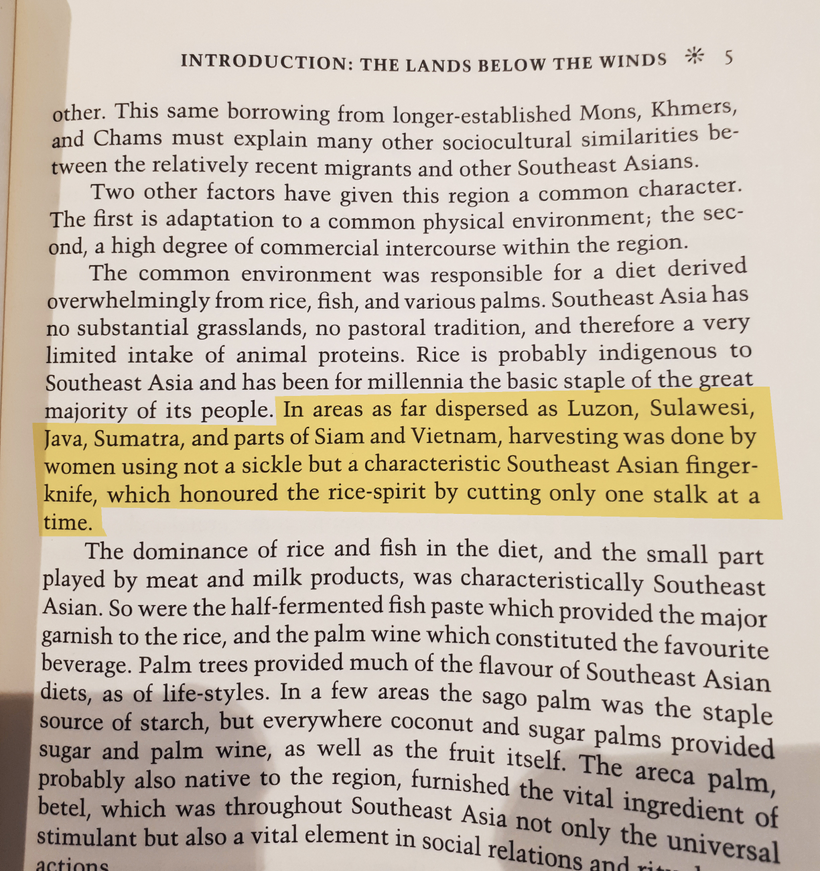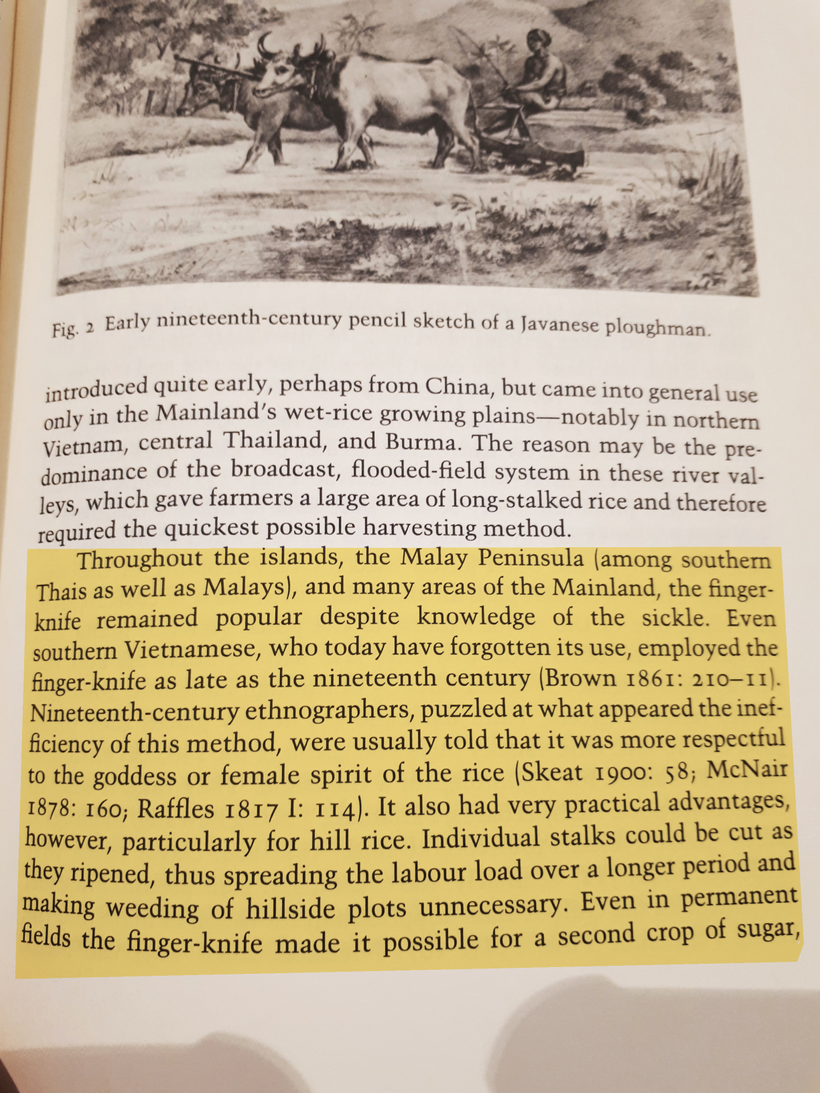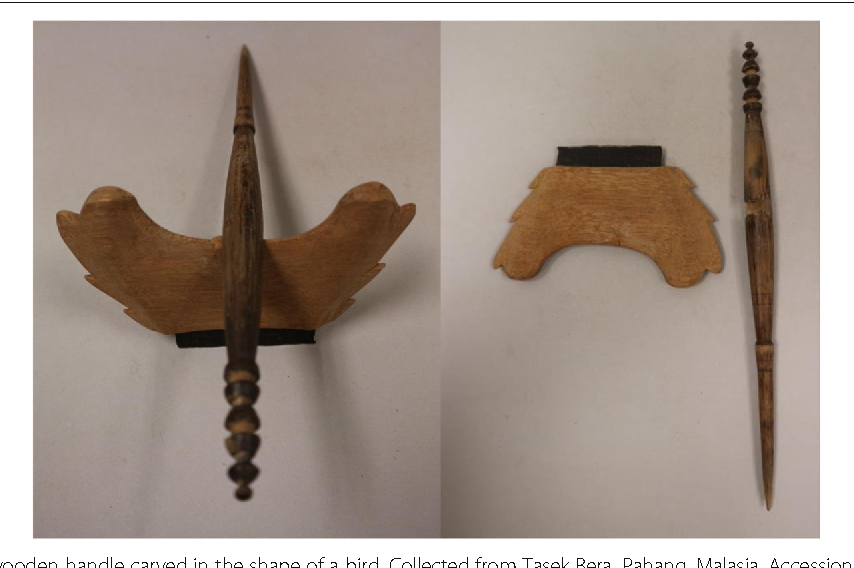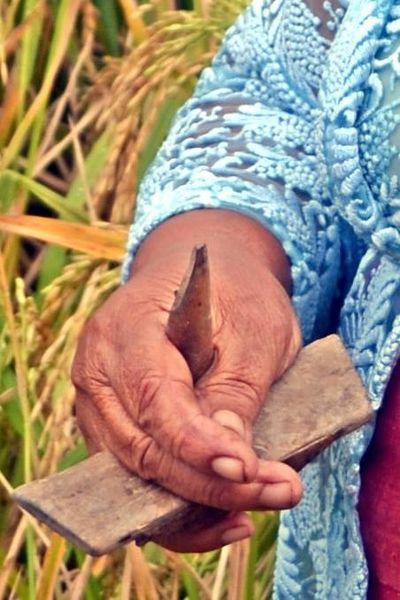Finally got to reading “Southeast Asia in the Age of Commerce” and came across this:


A finger knife that honoured the Rice Spirit by harvesting the rice one strand at a time...
I’ve actually never heard of a finger knife. What is a finger knife and what does it look like/how do you use it? I’m a huge nerd for all the everyday tools and objects of history so I had to stop the book to Google it.

This is a finger knife.

And this is how you use it to harvest an individual stalk of rice; using your middle and ring finger to press the base/stem against a sharpened metal, cutting it away from the plant itself.


The paper is where I got most of the images from: A quiet harvest: linkage between ritual, seed selection and the historical use of the finger-bladed knife as a traditional plant breeding tool in Ifugao, Philippines
Other cool notes from the paper
+ Sickles harvest rice much faster. There are two theories of why the finger knife is still chosen by communities. First being that it enables a certain specific convenience to the farmer; to selectively pick ripened rice stalks (some harvests have uneven ripening of rice stalks) and the selection also allows for the farmer to pick out the rice amongst the weeds. Eliminating the need for weeding during the growing of rice. Harvested rice bundles are also smaller and convenient for families to air dry until needed.
+ The second theory being the laborious needs of the hand sickle results in a more equitable distribution of rice. Because large landowners would need to need to hire farmers to help out and to pay a portion of the harvest for their labour, the laborious hand sickle guarantees more villagers being hired and being fed. Whereas the sickle would benefit much less villagers (MK: this theory explains the effects of the hand sickle but not the preference of it?)
+ Hand knives are also used for more selective harvesting; harvesting during wet seasons or having a partial early harvest.
+ In the Ifugao society, rice selection through hand knives are closely tied to the role of women. During harvests, women are traditionally seed selectors, selecting viable seeds using hand knives with their knowledge and familiarity with their traditional rice variety.
The introduction of commercial strands of rice which are harvested with sickles means the traditional knowledge of rice selection are no longer needed and the traditional role of women are subsequently negatively affected.
+ Other cool magical stuff: “wooden framework is held in the hand so as to hide the blade…. The underlying idea is that the rice grains shall not see the knife and that their vitality (semangat) shall not suffer through fright.”
+ Hand knives are frequently carved to look like birds, so the rice spirit would think that it is just birds that have come to feed and be cool with the rice be harvested.
+ The paper pushes the theory (separate from the previous two) that the usage of hand sickles comes down to a highly localized knowledge of the land and the rice itself. And with that knowledge, the hand knife provides the farmer a tool to be selective in their selection of seeds, maintaining or improving the long term quality of the rice field itself.
+++
Text by Mun Kao. This post was originally published on January 12, 2020 on the A Thousand Thousand Islands Patreon.

